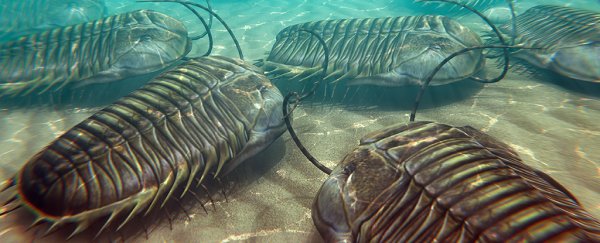Around a quarter of a billion years ago, the vast majority of species on land and sea were wiped out in The Great Dying, thanks to a series of volcanic eruptions spewing out noxious greenhouse gases.
With the discovery that land animals had a big head start in this tremendous mass extinction, researchers are now starting to suspect there might have been a lot more to the story, making the end of the Permian a truly unfortunate time to be alive.
An international team of geologists and palaeobiologists has uncovered evidence that could reset the established timeline on when life around the planet started to die out during the Permian extinction.
A little over 250 million years ago, when dinosaurs were barely in the early prototype phase, Earth was going through a bit of a rough patch. There are signs that tectonic activity near what is now Siberia generated pulses of eruptions that coincided with the loss of about 90 percent of all species.
Evidence of the volcanic tantrums can be found in changes in the chemistry of the geological record, while hints of the mass extinction are seen in the rapid dwindling of relatively common plant fossils and animals, such as Daptocephalus, and the increase of bones of opportunist species, such as the pig-like Lystrosaurus.
Previous research suggests there was no sign that something bad was about to happen, either. It was relatively clear sailing, and then - in the geological blink of an eye - all hell broke loose.
"Most people thought that the terrestrial collapse started at the same time as the marine collapse, and that it happened at the same time in the Southern Hemisphere and in the Northern Hemisphere," says palaeobotanist Cindy Looy from the University of California, Berkeley.
The standard for separating the tail end of the Permian from the start of the Triassic is based on a marine fossil bed near the city of Meishan in southern China. Its sediments point to a catastrophic moment 251.96 million years ago (give or take 35,000 years or so) when aquatic ecosystems collapsed and around 96 percent of all ocean species died out.
But it's not the only authority on the Permian-Triassic line.
Looy led the team in an analysis of isotopes found in crystals of zircon embedded in a pristine sample of volcanic ash from what's known as the Karoo Basin in South Africa.
"The Karoo Basin is the poster child for the end-Permian vertebrate turnover, but until recently, it was not well-dated," says Looy.
Back during the Permian, the basin was part of the Gondwana landmass. It's in these Southern Hemisphere fossil records that signs of vanishing terrestrial life are clearest.
Sure enough, the team failed to find pollen from significant species of land plants in the sediment immediately above the ash, confirming life on land was already beginning to fade soon after it was deposited.
But there was something odd about the isotope signature of the zircon itself. It suggested the volcanic material had been lying there for 252.24 million years.
Even taking some wiggle room into account, it seemed the ash was dropped hundreds of thousands of years before the sediment that defines the boundary near Meishan.
Either there was a mistake, or the Permian extinction event was much slower, with land species slipping away in the south first, followed a few hundred thousand years later by sea life throughout the north.
A similar study based on Australian geology was published earlier this year by a different team of researchers, also pointing to an earlier start to extinction on land. Thus, it's looking increasingly like The Great Dying was more staggered than we thought.
"Our new zircon date shows that the base of the Lystrosaurus zone predates the marine extinction with several hundred thousand years, similar to the pattern in Australia," says Looy.
"This means that both the floral and faunal turnover in Gondwana is out of sync with the northern hemisphere marine biotic crisis."
Exactly what this means is up for debate. Looy and her team have previously explored the potential for a loss of ozone to have played a role in the Permian extinction event.
Knowing there's a need to look further back in time could help better understand what global events were taking place in addition to volcanic eruptions, or whether there were complex effects that hadn't been considered.
This research was published in Nature Communications.
